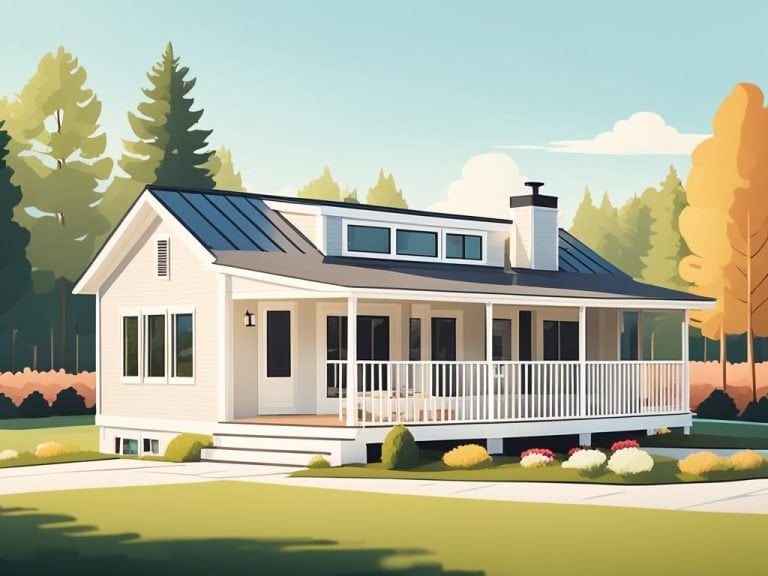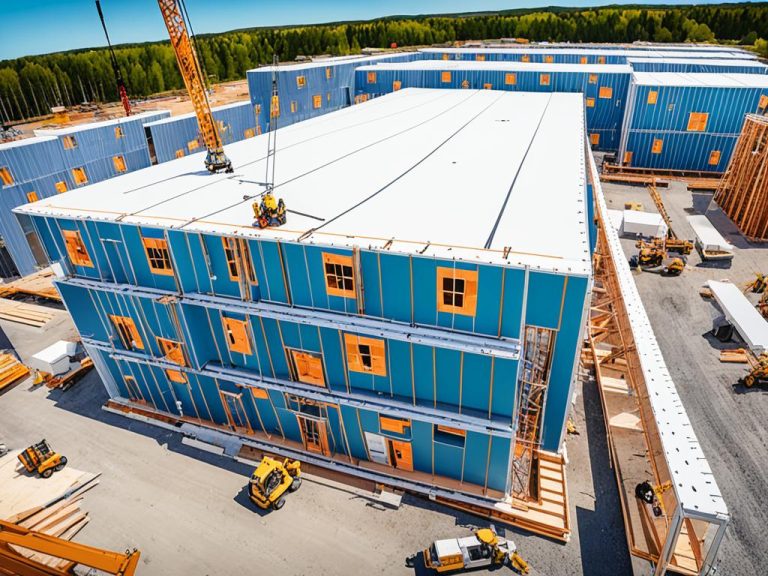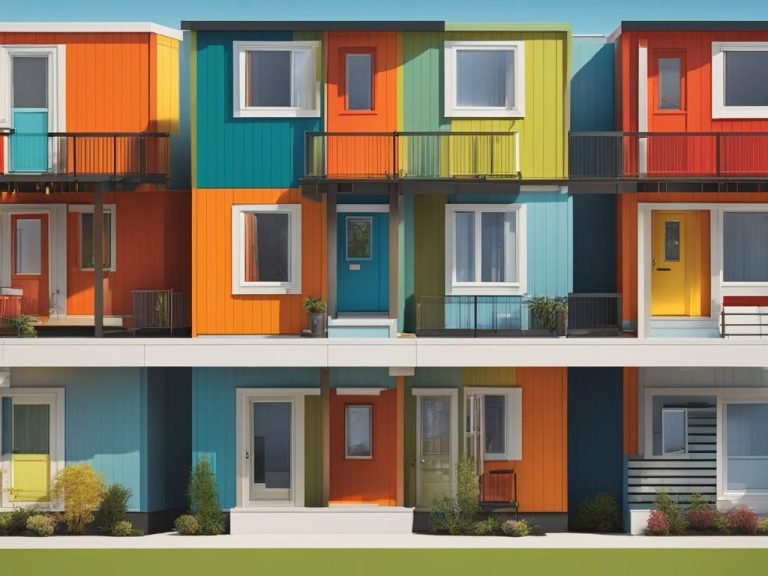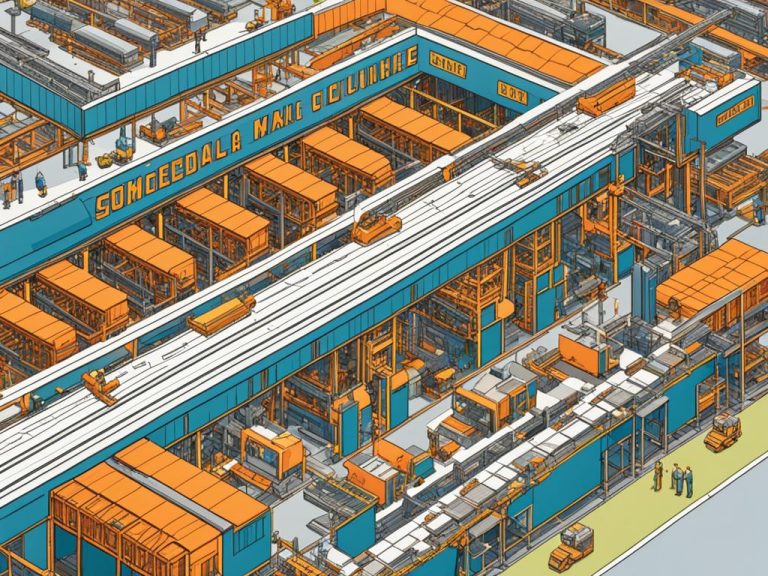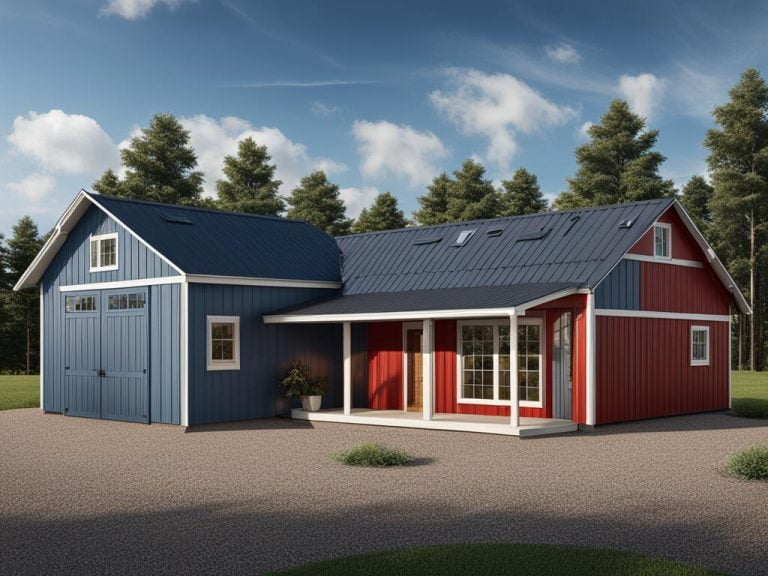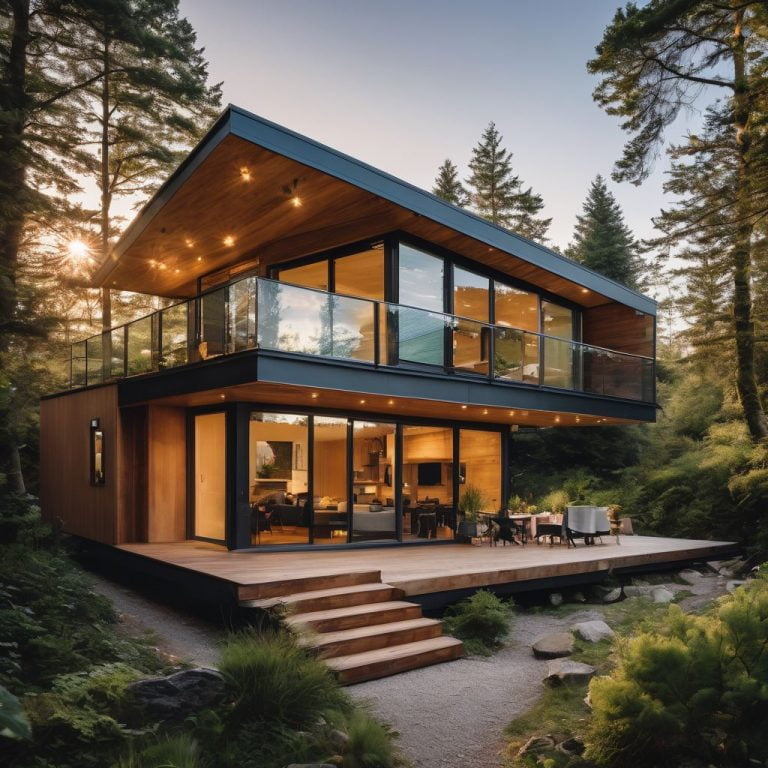Prefab vs Modular Homes
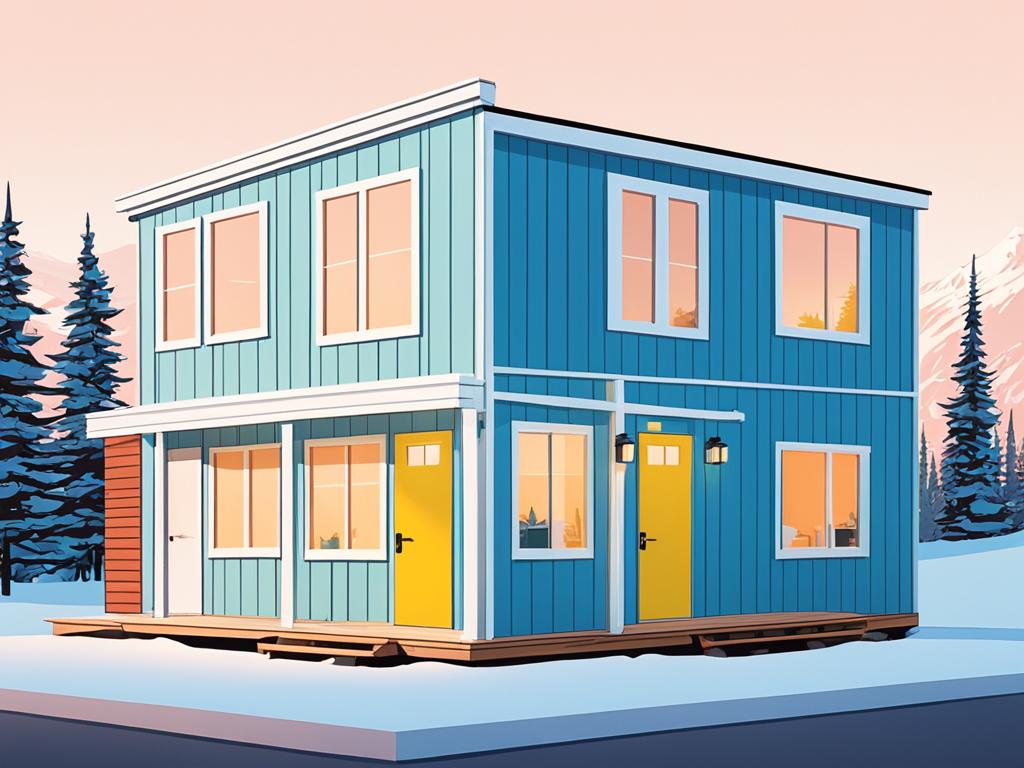
When it comes to constructing homes, two popular options are prefab homes and modular homes. These methods offer convenient and efficient ways to build houses, but they have distinct differences that homeowners should consider. In this article, we’ll explore the features and benefits of prefab and modular homes, helping you make an informed decision for your next home construction project.
Key Takeaways:
- Prefab homes and modular homes are two different construction methods for building houses.
- Prefab homes refer to prefabrication, while modular homes are made up of pre-assembled pieces.
- Prefab homes offer shorter build times, cost savings, and eco-friendly features.
- Modular homes are a specific type of prefab home with a higher level of prefabrication.
- Factors such as budget, timeline, and design preferences should be considered when choosing between prefab and modular homes.
What’s the Difference Between Prefab Homes and Modular Homes?
The main difference between prefab homes and modular homes is the level of prefabrication. All modular homes are prefabricated, but not all prefabs are modular.
Prefab homes encompass a broader category of construction methods, including modular houses, panel construction, and steel frame construction. These construction methods involve building some components of the house off-site before being transported and assembled on-site.
Modular homes, on the other hand, are a specific type of prefab home. They are constructed using pre-assembled pieces or modules that are built in a factory and then transported to the construction site for final assembly. The majority of the construction for modular homes happens in the factory, resulting in a higher level of prefabrication.
This distinction is important because it affects various factors of the home-building process. For example, modular homes tend to have a shorter build time compared to other types of prefab homes. This is because the majority of the construction is done in the controlled environment of the factory, minimizing weather delays and ensuring efficient assembly on-site.
Additionally, modular homes often offer greater design possibilities. Since the modules are built in a factory, they can be easily customized and combined to create unique layouts and architectural features.
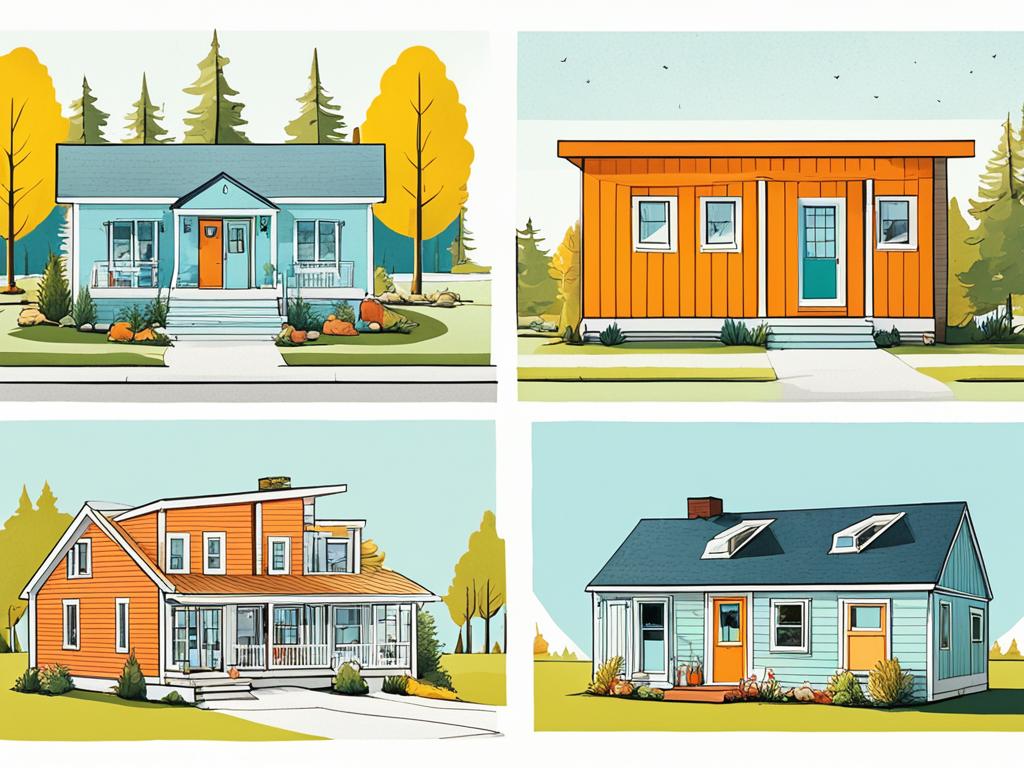
In summary, while all modular homes are prefab homes, not all prefabs are modular. Modular homes are a specific type of prefab home with a higher level of prefabrication. Understanding this difference is crucial when considering factors such as build time, cost, and design possibilities.
Benefits of Prefab Homes
Prefab homes, including modular homes, offer several advantages and benefits compared to traditional stick-built homes. Whether you’re looking for a faster construction process or a more eco-friendly option, prefab homes have got you covered.
One of the main advantages of prefab homes is the shorter build time. Since these homes are constructed in a factory, they are not subject to weather delays that can slow down on-site construction. This means that your prefab home can be built and ready for occupancy in a shorter timeframe, allowing you to move in and start enjoying your new home sooner.
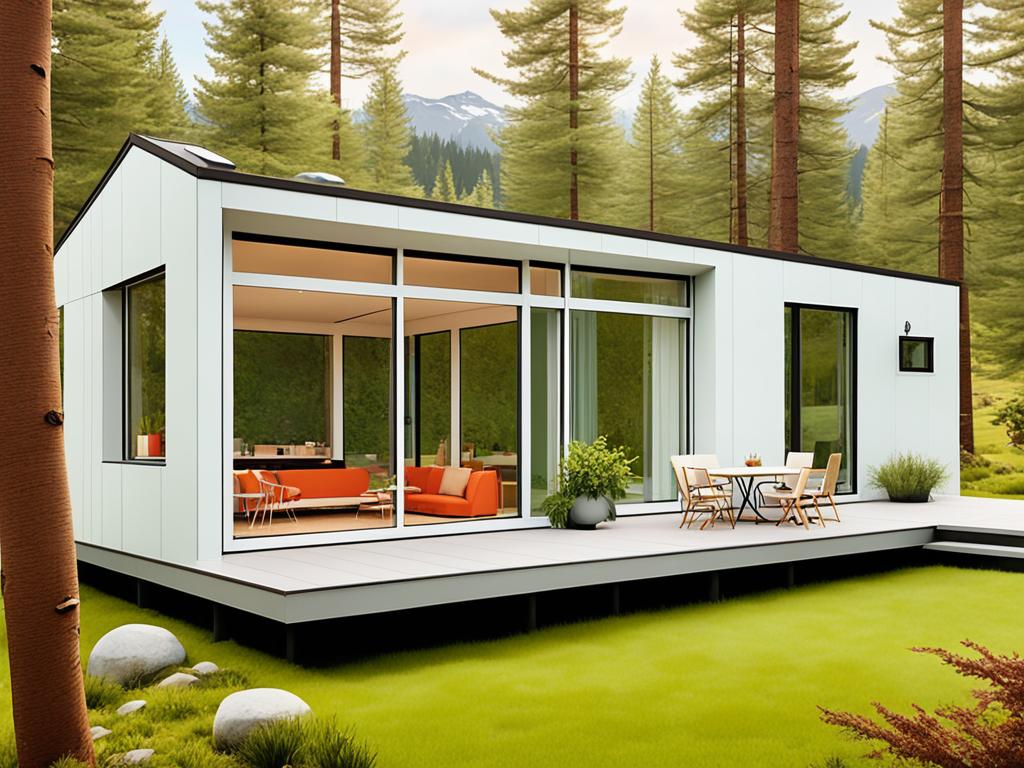
The controlled environment of the factory also ensures higher quality control and efficient production. Skilled workers can focus solely on the construction process, resulting in a well-built home with excellent craftsmanship. Additionally, the factory setting reduces waste and optimizes material usage, making prefab homes a more sustainable choice.
Speaking of sustainability, prefab homes are also more eco-friendly compared to traditional stick-built homes. The factory environment allows for better energy efficiency, with advanced insulation and state-of-the-art technology incorporated into the construction. This translates to reduced energy consumption and lower carbon emissions, making prefab homes a greener option for environmentally-conscious homeowners.
Furthermore, prefab homes offer design versatility. With a wide range of styles, sizes, and floor plans available, you can customize your prefab home to suit your unique needs and preferences. Whether you’re looking for a contemporary design or a more traditional aesthetic, prefab homes offer endless possibilities for creating your dream home.
In summary, the benefits of prefab homes, including modular homes, are abundant. From shorter build times and higher quality control to eco-friendliness and design versatility, prefab homes offer a modern and innovative approach to homeownership. Explore the world of prefab homes and discover the advantages that can transform your living experience.
Cost Comparison: Prefab vs Modular Homes
When it comes to cost, prefab homes can offer significant savings compared to traditional stick-built homes. The factory production and streamlined processes of prefab construction can result in lower labor costs and reduced construction time. This means that homeowners can potentially save money on building their dream home.
However, it’s important to note that the cost of prefab homes can vary depending on several factors. Factors such as the level of customization, location, and specific design features can affect the overall cost. For example, if you choose to customize your prefab home with high-end finishes or unique design elements, it may increase the cost.
On the other hand, modular homes, which are a type of prefab home, also offer potential cost savings compared to site-built homes. The factory production of modular homes allows for better cost control and efficiency, resulting in more cost-effective construction. By choosing a modular home, you can potentially save money without compromising on quality.
When comparing the cost of prefab and modular homes, it’s essential to consider both the initial cost and long-term savings. While prefab homes may offer upfront savings, it’s crucial to evaluate the overall value and potential energy efficiency of the home. By understanding the cost implications and considering your specific needs and budget, you can make an informed decision that suits your financial goals.
Take a look at the cost comparison table below to get a better idea of the potential savings:
| Home Type | Average Cost | Additional Costs |
|---|---|---|
| Prefab Home | £150,000 – £500,000 | Customization, location, design features |
| Modular Home | £100,000 – £350,000 | Customization, location, design features |
| Stick-Built Home | £200,000 – £600,000 | Labour, construction delays, weather-related issues |
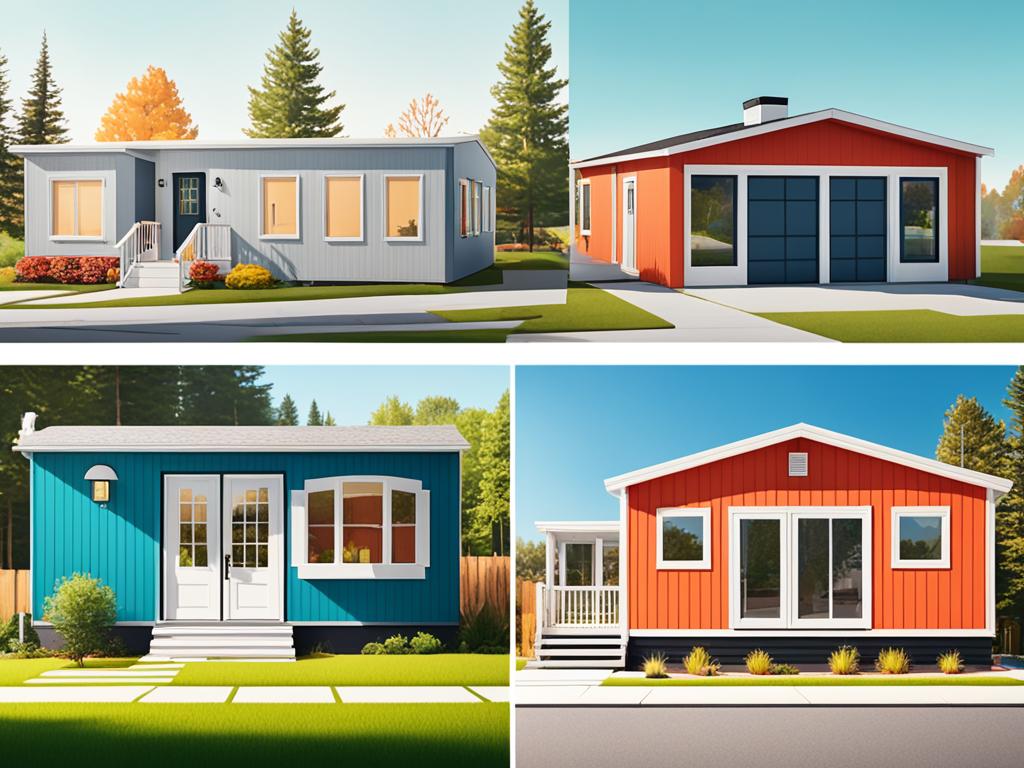
This cost comparison table provides a general overview of the potential cost range for prefab, modular, and stick-built homes. These figures are estimates and may vary depending on various factors. Remember to consult with builders and contractors to get accurate cost estimates for your specific project.
By considering the cost comparison and taking into account other factors like design, build time, and sustainability, you can determine which option suits your needs and budget. Whether you choose a prefab home or a modular home, you can enjoy the advantages of a more efficient and cost-effective construction process.
Eco-Friendliness of Prefab Homes
Prefab homes, including modular homes, are renowned for their eco-friendliness. These homes are built in a factory-controlled environment, resulting in reduced waste and improved energy efficiency during construction. By efficiently using materials and recycling scraps, prefab homes minimize waste generation and contribute to a more sustainable building process.
Moreover, prefab homes can be equipped with various sustainable features that further enhance their eco-friendliness. These include energy-efficient appliances, insulation, and renewable energy systems, which reduce energy consumption and reliance on non-renewable resources. By embracing these sustainable practices, prefab homes offer homeowners a greener alternative to traditional stick-built homes, helping to mitigate their environmental impact.
To visualize the eco-friendliness of prefab homes, take a look at the image below:
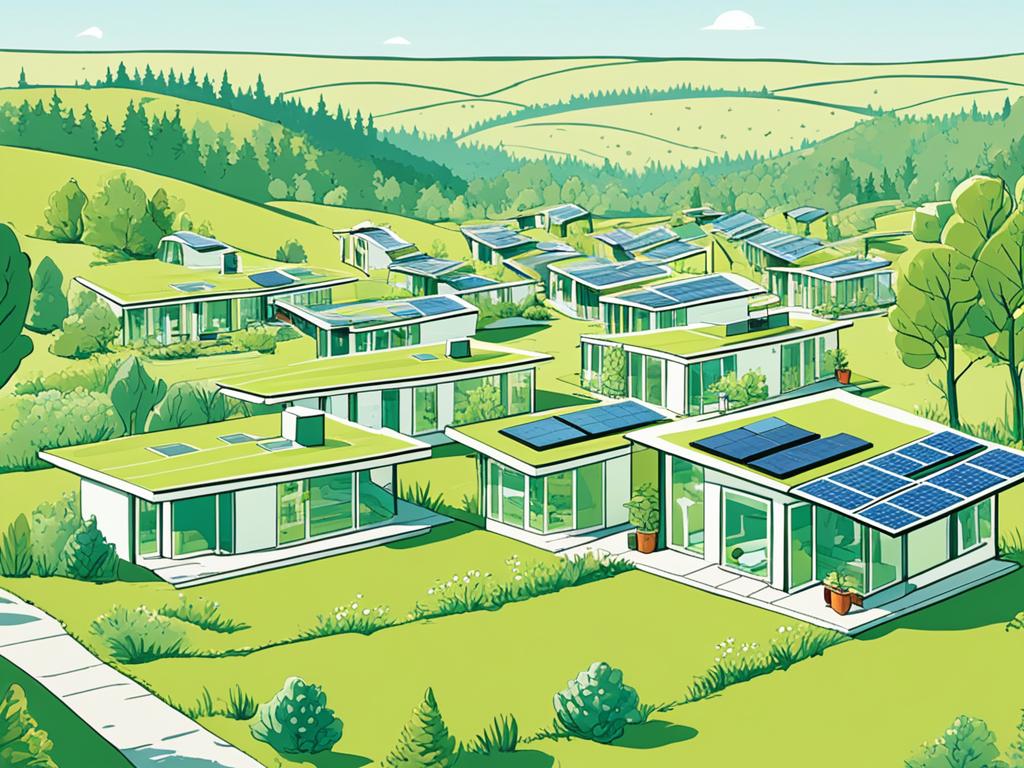
Conclusion
Prefab homes and modular homes offer homeowners a range of advantages over traditional stick-built houses. These alternative construction methods provide quicker build times, cost savings, and eco-friendliness, making them an attractive option for those looking for modern and innovative approaches to home construction in the UK.
One of the key benefits of prefab homes, including modular homes, is the shorter build time. As these homes are constructed in a factory, they are not subject to weather delays, allowing for a more efficient construction process. Additionally, the controlled environment of the factory ensures higher quality control and reduced waste, contributing to cost savings and sustainability.
Modular homes, as a type of prefab home, offer a higher level of prefabrication and design flexibility. With pre-assembled modules being constructed in the factory and then transported to the site, homeowners have more options in terms of customization and floor plan choices. This gives them the opportunity to create a home that perfectly meets their specific needs and preferences.
When considering the choice between prefab and modular homes, homeowners should take into account factors such as budget, timeline, desired design, and sustainability goals. While prefab homes, including modular homes, offer numerous advantages, it’s important to assess individual requirements to make the best decision for a future home.
FAQ
What is the difference between prefab homes and modular homes?
Prefab homes refer to prefabrication, where the house is built in a factory before being assembled on-site. Modular homes are made up of pre-assembled modules that are built in a factory and transported to the site for assembly.
What are the benefits of prefab homes?
Prefab homes, including modular homes, offer a shorter build time, higher quality control, and design versatility. They are also more eco-friendly, resulting in better energy efficiency and reduced carbon emissions compared to traditional stick-built homes.
How do prefab homes compare in cost to traditional stick-built homes?
Prefab homes, including modular homes, can offer cost savings due to lower labor costs and reduced construction time. However, the cost of prefab homes can vary depending on factors such as customization, location, and specific design features.
Are prefab homes environmentally friendly?
Yes, prefab homes are known for their eco-friendliness. The factory production process reduces waste and allows for better energy efficiency. Additionally, prefab homes can incorporate sustainable features such as energy-efficient appliances and renewable energy systems.
Which construction method should I choose between prefab and modular homes?
The choice between prefab and modular homes depends on your specific needs and preferences. Consider factors such as budget, timeline, desired design, and sustainability goals. Both prefab and modular homes offer modern and innovative approaches to home construction in the UK.

